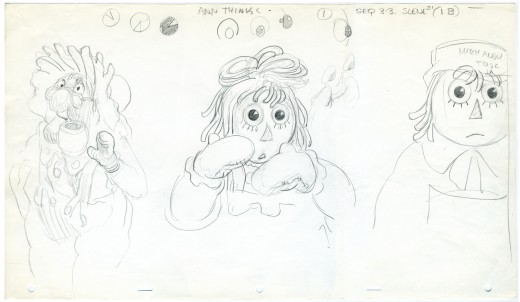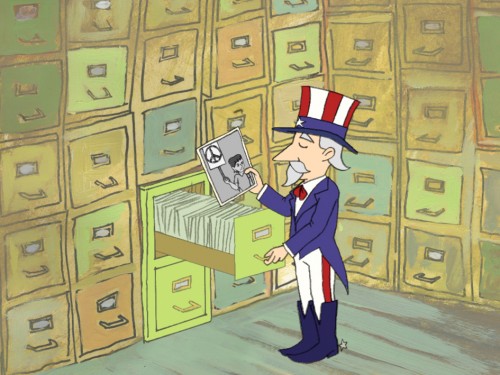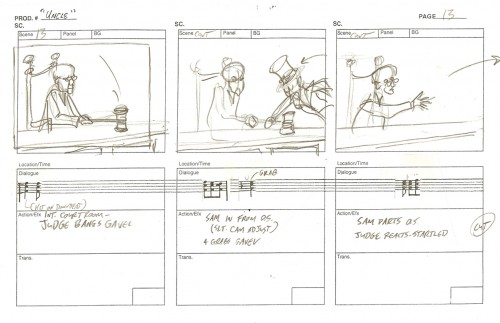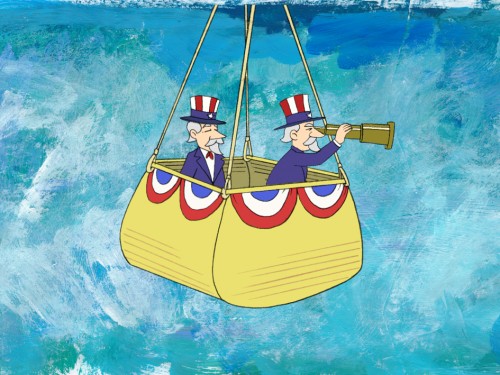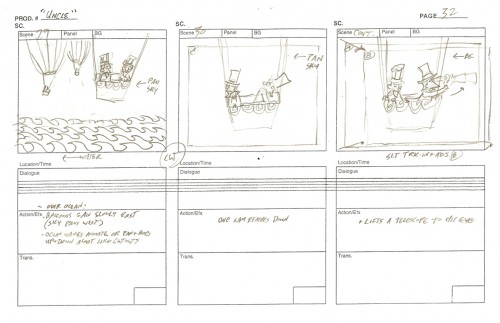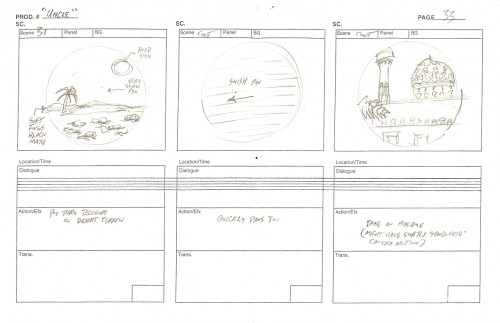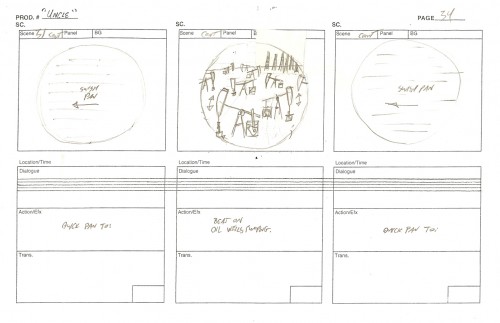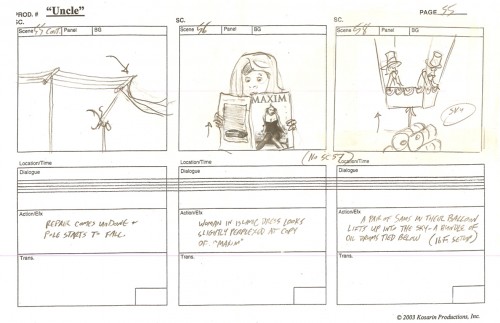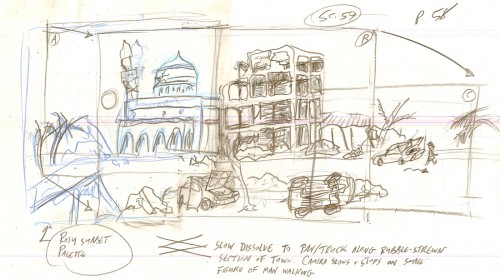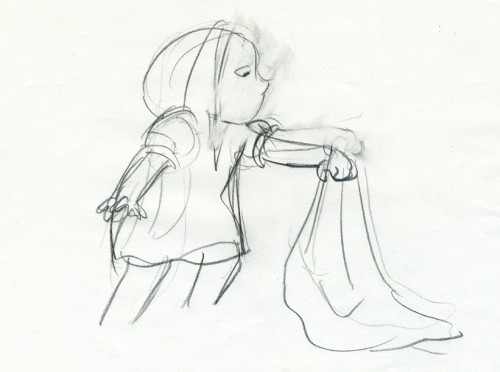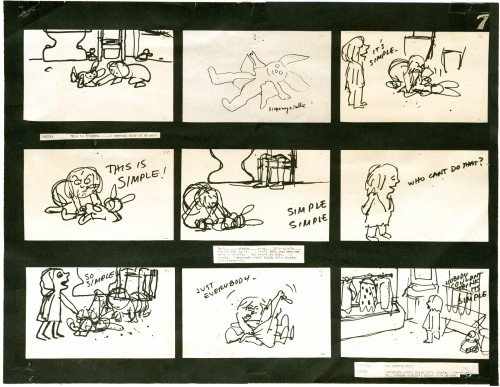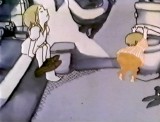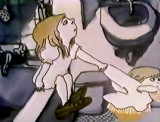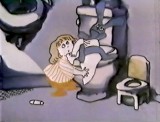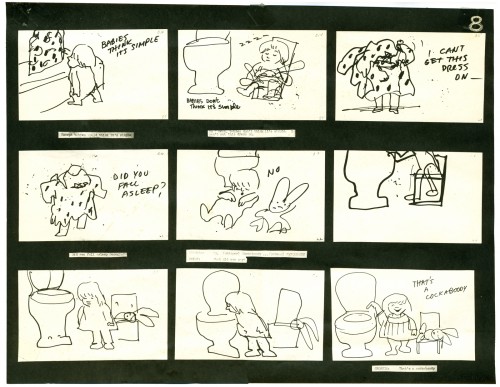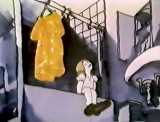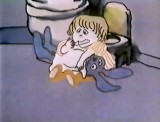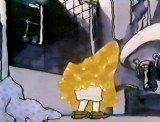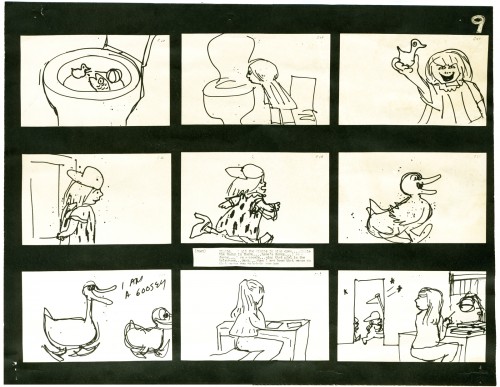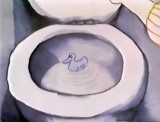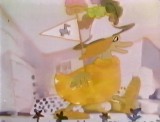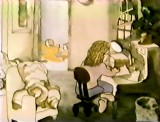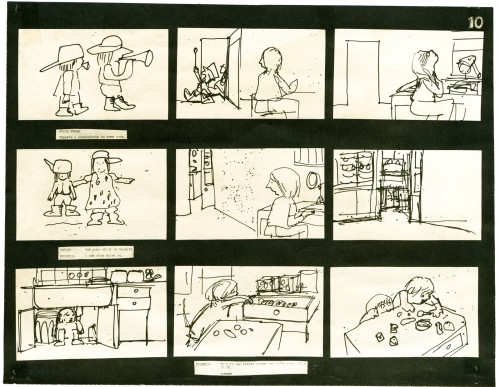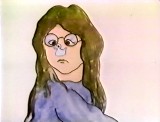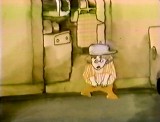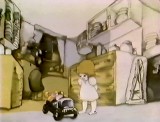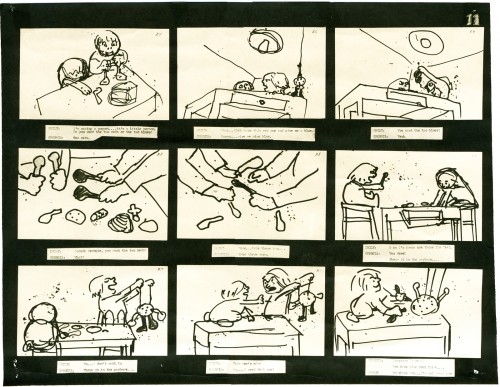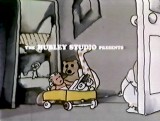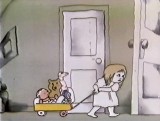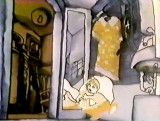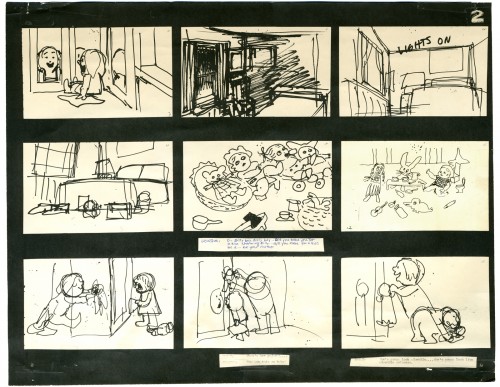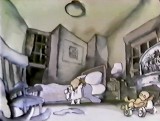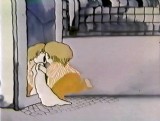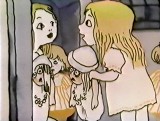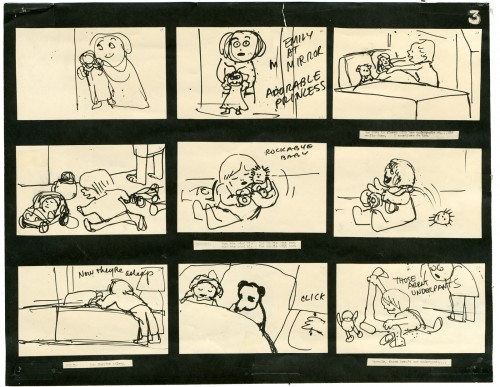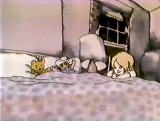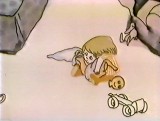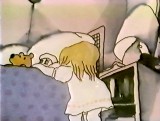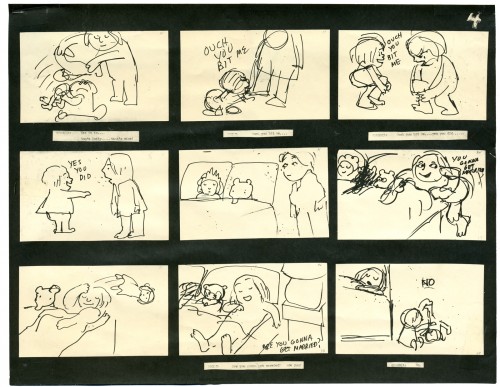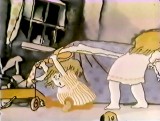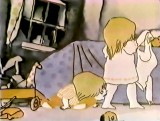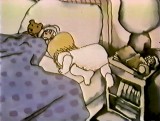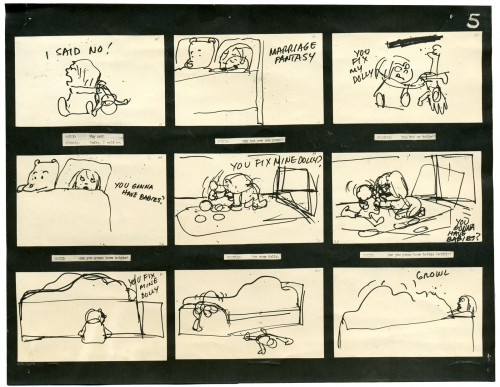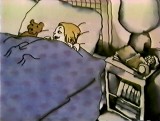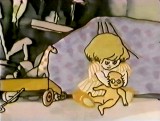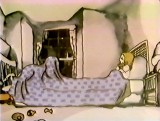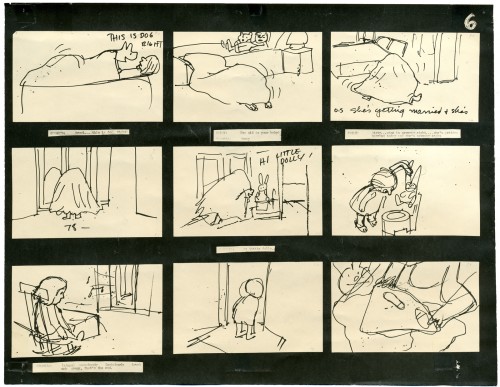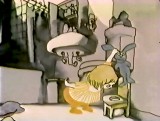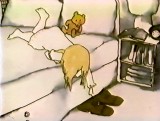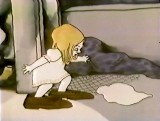Category ArchiveStory & Storyboards
Animation Artifacts &Layout & Design &Richard Williams &Story & Storyboards 17 Aug 2007 07:41 am
30 Raggedy Years
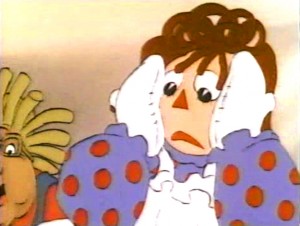 – Tom Sito‘s blog, yesterday, reminded me that it was the 30th anniversary of the release of Raggedy Ann & Andy:A Musical Adventure .
– Tom Sito‘s blog, yesterday, reminded me that it was the 30th anniversary of the release of Raggedy Ann & Andy:A Musical Adventure .
To quote Tom’s blog:
___ASIFA/Hollywood is planning
___to have a reunion of the crew of
___Raggedy Ann to celebrate the
___anniversary. It will be at the
___American Film Institute in
___Hollywood on November 17th.
___A simultaneous reunion will
___happen in New York City. A lot of wonderful people worked on this film, many getting
___their first start.
This gives me a good reason to post some artwork from this film in the next few months. So, excuse me if you find it annoying to see artwork from a second rate feature. However, this was a seminal film for a lot of talented people who got a chance to work along some of the masters.
Just check out this list of animators on the film:
_____Hal Ambro, Art Babbitt, George Bakes, John Bruno, Gerry Chiniquy,
_____Tissa David, Emery Hawkins, John Kimball, Chrystal (Russell) Klabunde,
_____Charlie Downs, Grim Natwick, Spencer Peel, Willis Pyle, Jack Schnerk,
_____Art Vitello, Carl Bell and Fred Hellmich left mid-production.
_____Gerry Potterton was the consulting Director.
_____Cosmo Anzilotti was the Asst. Director.
_____Corny Cole was the designer of the film.
These were some of the younger upstarts inbetweening and assisting:
_____Bill Frake, Jeffrey Gatrall, John Gaug, Eric Goldberg, Dan Haskett, Helen Komar,
_____Judy Levitow, Jim Logan, Carol Millican, Lester Pegues Jr, Louis Scarborough Jr,
_____Tom Sito, Sheldon Cohen and Jack Mongovan.
_____I supervised assistants and inbetweeners in NY,
_____Marlene Robinson did that job in LA.
If you don’t know who these people are, trust me they were the backbone of the business for many, many years prior to 1976.
In some ways I think this along with some of the Bakshi and Bluth films led directly toward the rebirth of animated features. There was a long dark period before it.
So to start with the artwork.
This is a scene which immediately follows the Pirate kidnapping Babette.
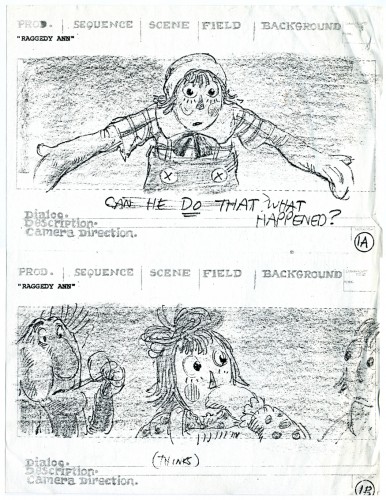
Here’s the storyboard for the two scenes. It’s a copy of
Corny Cole’s drawing from the director’s workbook.
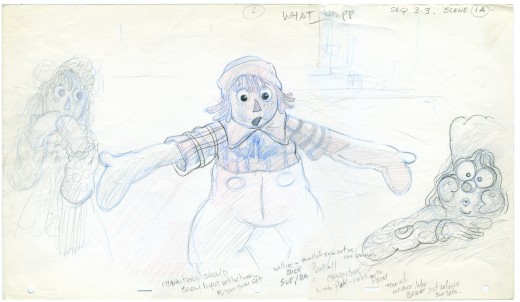
This is Corny Cole’s layout for Sc. 1A.
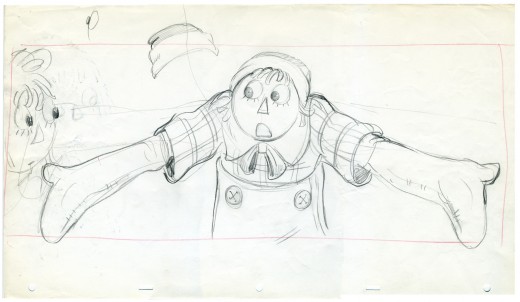
Here we have Dick Williams’ reworking of the same pose.
Fred Hellmich originally animated this, but Dick Williams redid the entire sequence, and
Fred left the film.
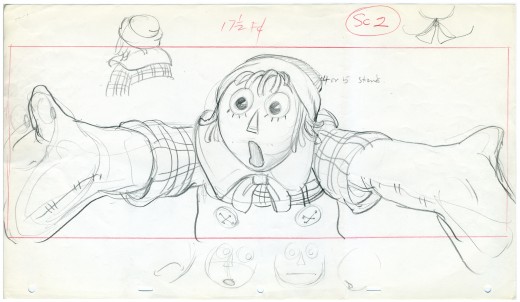
Cut back to Andy (as drawn by Dick Williams) for Sc. 2.
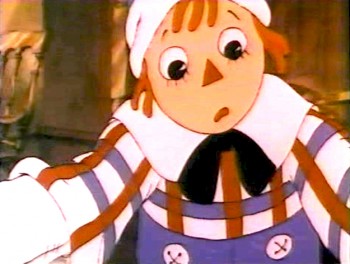
How small it all gets on a pan and scan video.
Animation &Independent Animation &Story & Storyboards 11 Aug 2007 07:43 am
Uncle
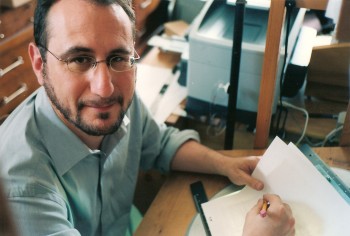 – After seeing Ray Kosarin‘s film Uncle, a couple of years ago, I could only say that I was ecstatic that finally someone had made a REAL political cartoon that stated a REAL opinion. (It also helped that I agreed with the opinion.)
– After seeing Ray Kosarin‘s film Uncle, a couple of years ago, I could only say that I was ecstatic that finally someone had made a REAL political cartoon that stated a REAL opinion. (It also helped that I agreed with the opinion.)
It wasn’t like the JibJab let’s-laugh-at-everyone’s-expense-without-stomping-on-any-feet kinda film. Ray had something to say; he said it with humor, but he pointedly told what he saw. A political cartoon in the best sense. Jay Leno isn’t going to show his film.
Ray Kosarin has worked within the New York Industry for years. He started out in my studio and animated brilliantly on many of my half hour films. He directed on MTV’s Daria, Beavis & Butthead and spent a bit of time at the Mutant Ninja Turtles. It’s exceptional that he did this political film in his nights and weekends, and you can see the high cost of production on the screen as this short plays. It’s not a second-rate Flash piece but a REAL animated film, and it employed many key animation people in town.
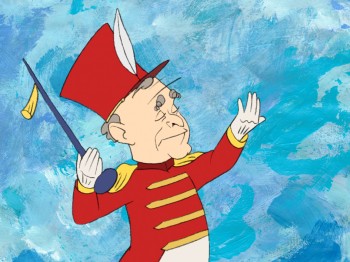 Now that Uncle has been picked up by local PBS outlet Thirteen’s ReelNY series which highlights independent filmmaking, it means that you can watch a clip on line as well as view an interview with Ray. Here’s a working animator who put a lot of his own money on the table to make a serious and dark political commentary. He hired a lot of friends to help, and made a first rate film. You should check it out, if only to support this type of filmmaking. The political statement is also high reason to see the film. If you have access to ReelNY on the East coast, keep your eye out for it. (I’ll definitely give a heads up when it’s about to air. It’s a work well done.
Now that Uncle has been picked up by local PBS outlet Thirteen’s ReelNY series which highlights independent filmmaking, it means that you can watch a clip on line as well as view an interview with Ray. Here’s a working animator who put a lot of his own money on the table to make a serious and dark political commentary. He hired a lot of friends to help, and made a first rate film. You should check it out, if only to support this type of filmmaking. The political statement is also high reason to see the film. If you have access to ReelNY on the East coast, keep your eye out for it. (I’ll definitely give a heads up when it’s about to air. It’s a work well done.
I’ve asked Ray to share some of the art from the film, and he sent me these stills and storyboard drawings. He deserves as much attention as he can get.

(Click any image on screen to enlarge.)
_Still(s) from UNCLE, animated film by Ray Kosarin, © 2004 Kosarin Productions, Inc.
Animation &Animation Artifacts &Hubley &Story & Storyboards &Tissa David 10 Aug 2007 07:21 am
Cockaboody Layouts
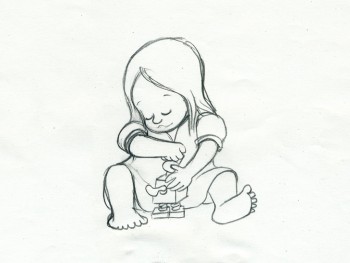 – To hook up with the Cockaboody storyboard I’ve posted in three parts (Part 1, Part 2, Part 3)
– To hook up with the Cockaboody storyboard I’ve posted in three parts (Part 1, Part 2, Part 3)
I thought I’d post some of the key drawings done by Tissa David.
To make them a bit more meaningful, to see what a really sensitive animator adds to a film, with the help from her director, I’m also posting the storyboard drawings that relate to these animation keys.
(Click any image to enlarge in a different view.)
If you watch the film with the storyboard in front of you, you’ll find a lot of discrepancies. The film grew as the animation began.
While working for Phil Kimmelman & Ass. for a short period (which just so happens to have been the exact time the Hubleys were making Cockaboody – I came back to their studio and joined their film in the very last stages) I learned an interesting saying that was the credo at Kimmelman’s. At every stage the film should get bigger. By this, they meant that the animator should take the storyboard and build on it. The Assistants should add whatever they could to the animator’s work, etc. I liked the sound of that and remind myself of it often and try to plan my films so that will be likely to happen.
I certainly think that Cockaboody does this.
If you want to see the film, it’s currently on YouTube.
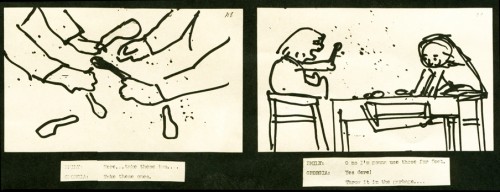
Tissa takes this play with the blocks and places it on the floor. This keeps all of the action down at the girls’ level and allows the blocks to be used throughout the film. They show up
a bit later as part of the background art.
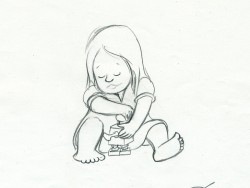
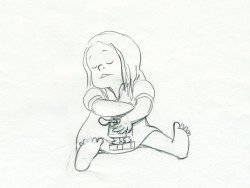
The blocking also puts more attention onto the character of the girls instead of having to have them climb up the chairs to get in place at the table.
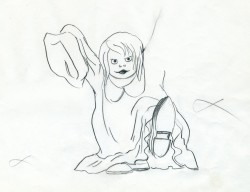
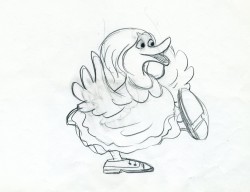
The storyboard drawing above left (with the “goosey”) is the only representation of the girl wearing her father’s shoes. Tissa took this small bit and ran with it.
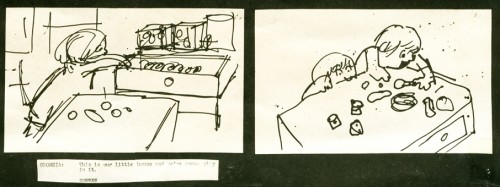
Obviously the action in the boards has nothing to do with the action in the film.
Tissa moved the girl to the closet quietly getting us into the next sequence with this girl
still in grownup shoes.
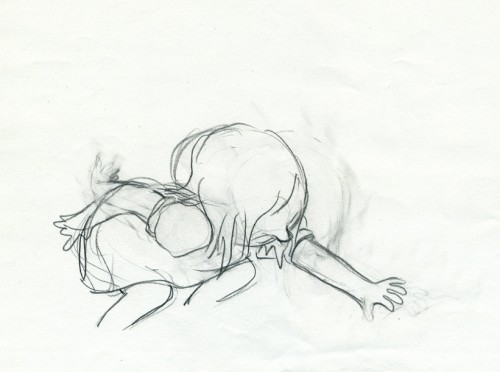
Both of these drawings (above and below) use the father’s shoes on another level.
It forces the girl to bend far to pick up the “blankey.”
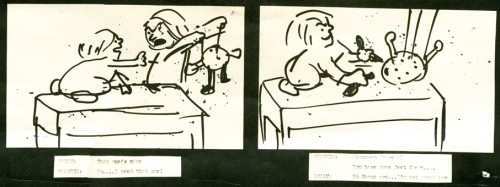
Again we’re off the table on the floor, and this sequence now builds out of what came
in the past. There’s a lot of definition in the two kids at this point.
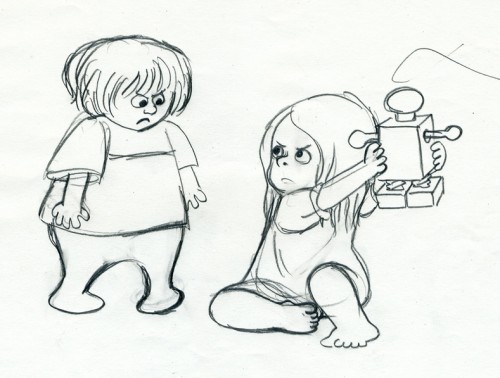
Even the toy has more definition in Tissa’s hands. I’m sure there was some discussion
of this with John. The film takes a solid shape, built on the storyboard drawings and developed with another voice.
Animation Artifacts &Hubley &Story & Storyboards 09 Aug 2007 07:43 am
Cockaboody Board Part 3
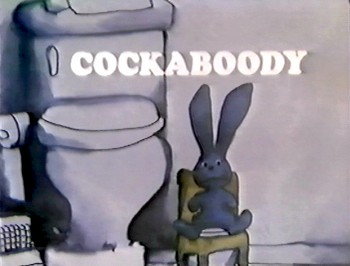 – Here we have the conclusion of the storyboard John Hubley drafted for the short film, Cockaboody.
– Here we have the conclusion of the storyboard John Hubley drafted for the short film, Cockaboody.
These are the direct links to
Part 1 and Part 2.
The film was an outgrowth of an early recording John and Faith made of their two daughters, Emily and Georgia. While teaching at Yale the Hubleys worked with the students in their class to help develop this storyboard. One of the students, Kate Wodell, came to work in the studio and was a mainstay there for many years and continued for a while helping Faith on many of her shorts after John died.
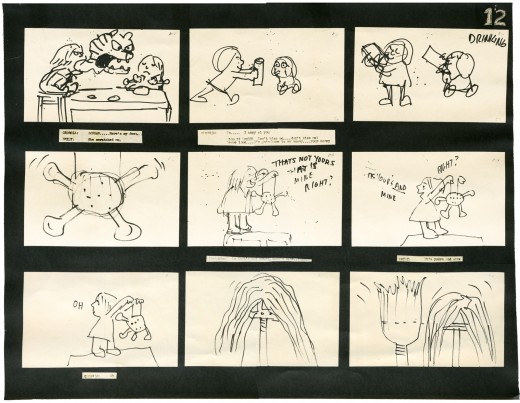
__
__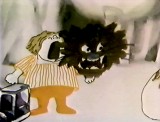 _
_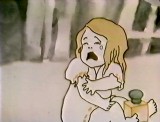 _
_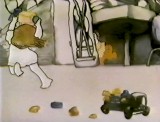
__
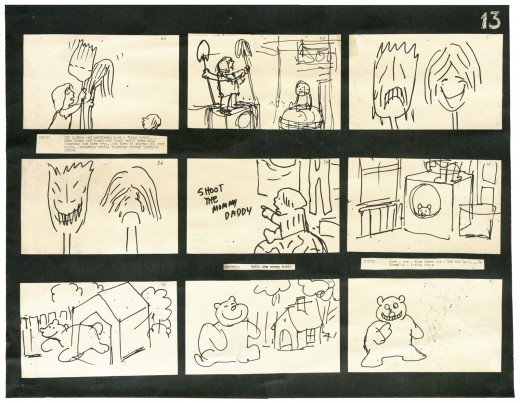
__
__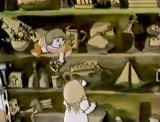 _
_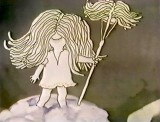 _
_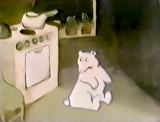
_
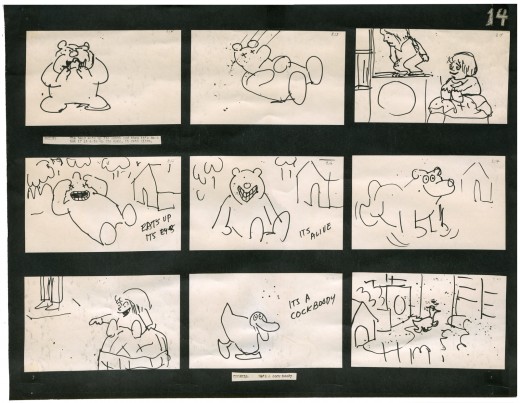
__
__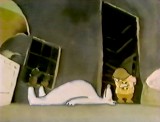 _
_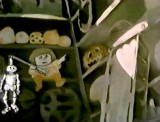 _
_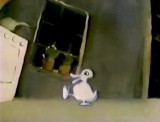
__
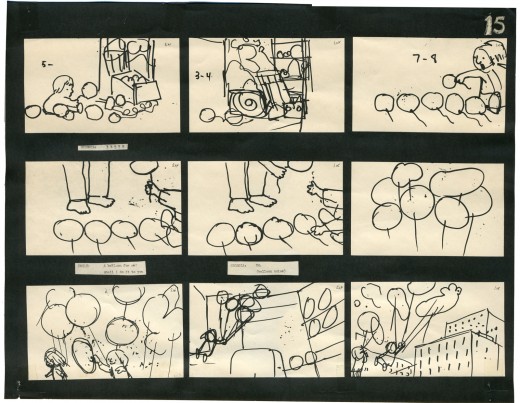
__
__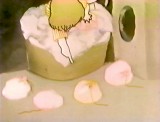 _
_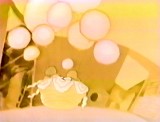 _
_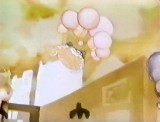
__
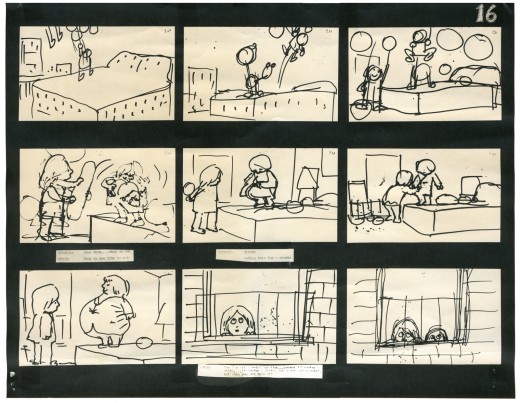
__
__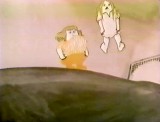 _
_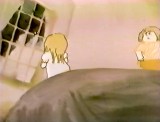 _
_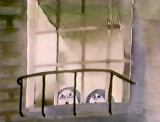
__
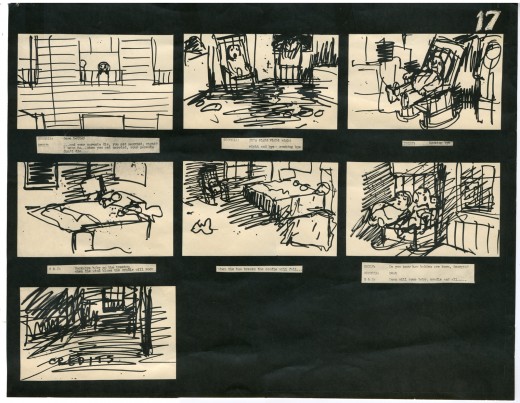
__
__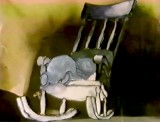 _
_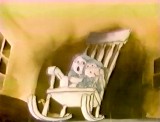 _
_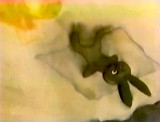
Animation Artifacts &Hubley &Story & Storyboards 03 Aug 2007 07:32 am
Cockaboody Board 2
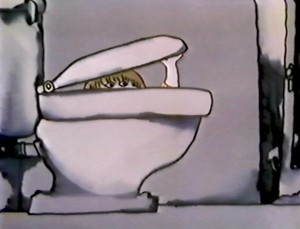 - When we last left the storyboard for Cockaboody, the girls were in the bathroom about to diaper their bunny doll. The story is about toilet training for children.
- When we last left the storyboard for Cockaboody, the girls were in the bathroom about to diaper their bunny doll. The story is about toilet training for children.
Here’s the direct link to Part 1.
Cockaboody, of course, is the film by John and Faith Hubley. The storyboard, with all of the drawings done by John, was developed in conjunction with the Hubley’s class at Yale. The students actively discussed the board and offered their participation in the growth of the film’s origin. A documentary was also produced showing the production of the animated short.
The film grew out of some early tapes recorded by the Hubley daughters, Georgia and Emily, who were recorded at play in a studio. The conversations by the children were all improvised. This is not unlike the prior Hubley films, Moonbird and Windy Day.
As with the previous post, I’m including some frame grabs of the actual film underneath the appropriate storyboard sections. Tissa David animated the film completely, herself. No assistants worked with her. Faith inked the entire film.
You’ll notice that the action in the film varies from the setups in the storyboard. This undobted had to do with Tissa’s involvement. She would often rework things with John and alter the filmmaking. John, and most of the directors Tissa works with, was open to this. She has a masterful sense of camera placement and uses it throughout this film.
_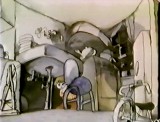
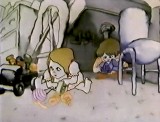
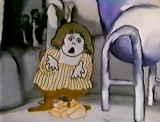
________________________________________________________ To be continued.
Animation Artifacts &Hubley &Story & Storyboards 30 Jul 2007 08:06 am
Cockaboody Board 1
 – I have a photostat copy of the storyboard to John and Faith Hubley‘s short film, Cockaboody. So I thought I’d post it to give a good demo of a storyboard from a master. The board was done in 1973.
– I have a photostat copy of the storyboard to John and Faith Hubley‘s short film, Cockaboody. So I thought I’d post it to give a good demo of a storyboard from a master. The board was done in 1973.
I had worked at Hubley’s for four months on Letterman and was layed off when that work ran out. They started preliminary work on Cockaboody while I was working on the feature Tubby The Tuba.
I left that project in time to get back to see the final scenes of Cockaboody colored, and I did a little animation of a rocking chair, with the two girls cradling it, at the film’s end. I didn’t do enough work on the film to receive credit, but I can still see my pencil lines on those two girls at the end of the film.
The film tells the story of two girls playing in a room next door to their babysitter. They laugh they cry they laugh they cry.
The film was improvised by Emily and Georgia Hubley in a recording studio years before they started the film. From the edited tracks a story was culled, and a storyboard formed. John did all of the drawings in storyboarding it.
Here are the first six pages; there are 17 in all. I’ve inserted fraame grabs so you can see how the final turned out. Tissa David animated the entire film.
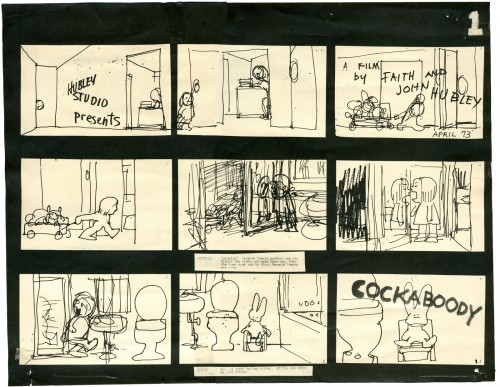
___(Click any image to enlarge.)
____________________________________________________(to be continued.)
Animation Artifacts &Story & Storyboards 05 Jul 2007 03:39 am
Fantasia Leica – Part Fin
- So here we have the last of the elements from the Fantasia Leica reel. I have these on loan fom John Canemaker, and it’s great to see what they look like.
The strips I’m posting today seem to be bits and pieces that have, for the most part, been removed from the Nutcracker Suite sequence. Enjoy.
(As always click any image to enlarge a bit.)
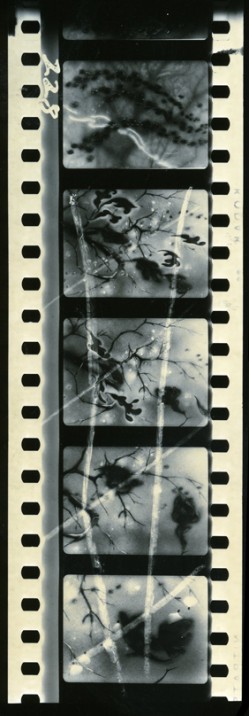
 B
B
A. The first of these pieces might seem familiar to those of you who’ve seen the Robert Feild book, The Art of Walt Disney. It resembles the Ballet of Falling Leaves seen on pg. 190. The Feild book puts this cut sequence in Bambi, but this similar scene is obviously in Fantasia, and cut out (note that it’s been “X-ed” out on the film) from that film as well. For those unfamiliar with the Feild book, I’m posting this page below.
B. & C. These frames are part of the Milkweed Dance.
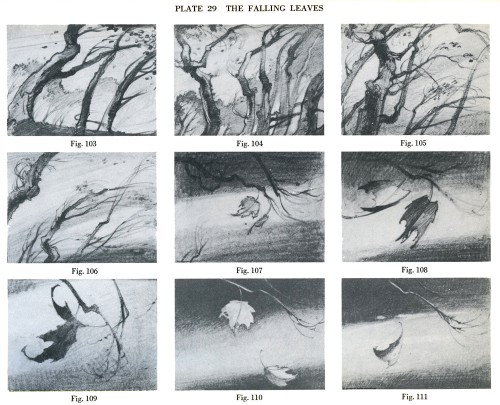
The Falling leaves in the Feild book.
 C/D
C/D E
E
C, D. & E. are all part of a dance of snowflakes.
Thanks again to John Canemaker for this revealing footage.
Animation Artifacts &Story & Storyboards 29 Jun 2007 08:03 am
Fantasia Leica Reel IV
- Here’s the fourth part of the Fantasia Leica Reel posted courtesy of John Canemaker‘s loan. Here we have the “Milkweed Ballet” an appearance by the “Frost Fairies” and the “Snowflake Fairies.”
(As always, click any image to enlarge.)
 1
1  2
2
There’s one more post to this series. I have a couple of pages of scraps and bits and pieces which I’ll put all together in the next and last one.
Animation Artifacts &Story & Storyboards 20 Jun 2007 07:15 am
Fantasia Leica Reel – Part III
- Continuing with the LEICA reel from Fantasia‘s Nutcracker Suite, here’s an altered version of the sequence I posted last Friday, (go here to view it). This has some new drawings added and some others excluded. It makes for an interesting comparison to see how it’s changed.
As I’ve stated before, many thanks to John Canemaker for lending me this valuable and interesting material.
So back we go to Tchaikovsky:
 A
A  B
B
(Click any image to enlarge.)
Once again, to get a more elaborate understanding of Leica reel creations go to Hans Perk‘s site, A Film LA. You should be going there regardless; it’s a great site.
Animation Artifacts &Story & Storyboards 15 Jun 2007 08:37 am
Fantasia Leica II
- This continues my posting of the Fantasia Leica reel materials that John Canemaker has loaned me. The remainder of the stats are of the Nutcracker Suite, and some are duplications which show some changes in the material. (I’ll post all of them.)
Some of these images have appeared in books by John. (Check out his book Before the Animation Begins.)
I like the fact that they keep fade outs/in in the images.
(Once again, to get a more elaborate understanding of Leica reel creations go to Hans Perk‘s site, A Film LA. here.)
Onto Tchaikovsky, Leopold, if you’re ready:
 2a
2a  2b
2b
(Click on any image to enlarge.)
